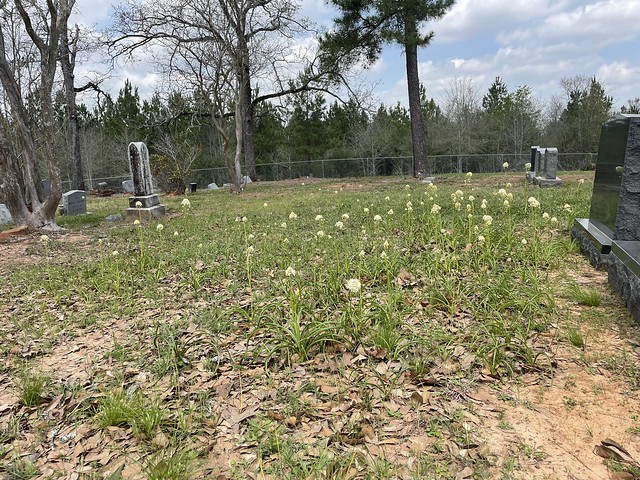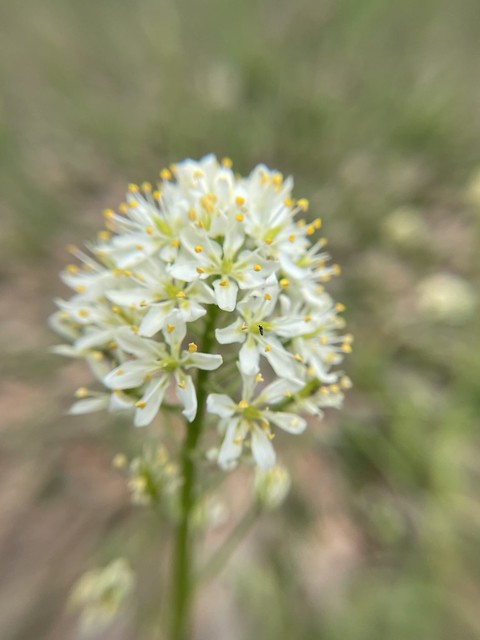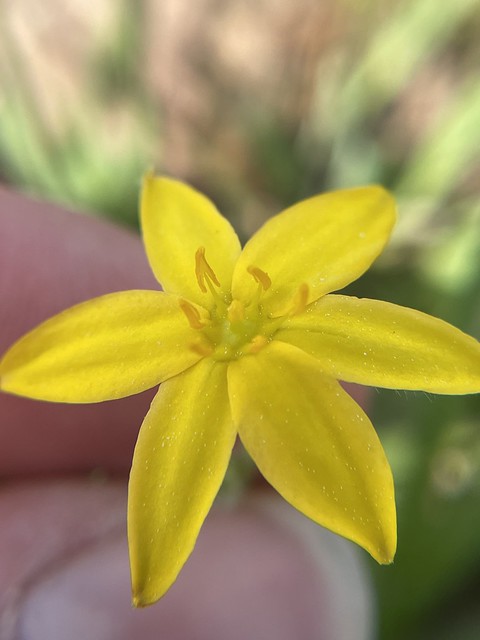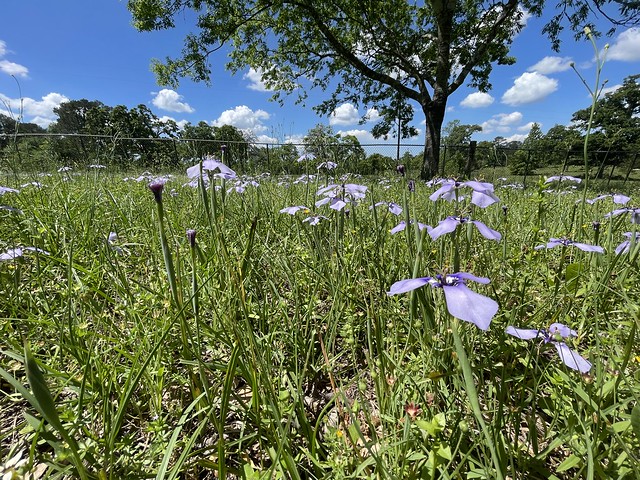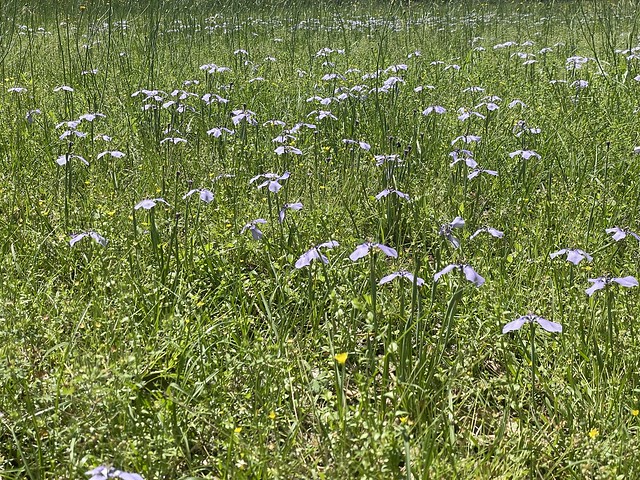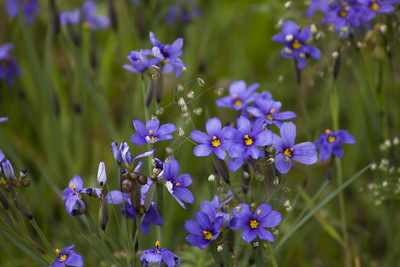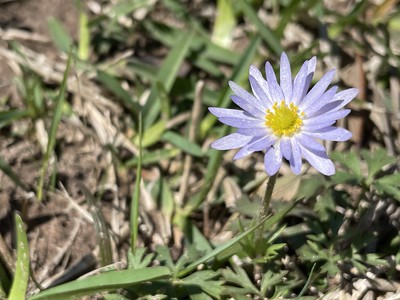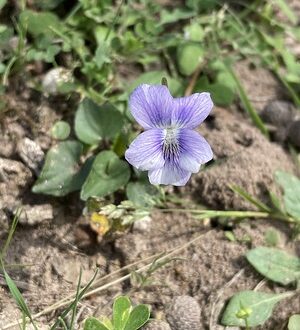Cemetery Botanizing – Old Sanders Cemetery | 5
This is probably my favorite cemetery botanizing from last year. Write up at the end!
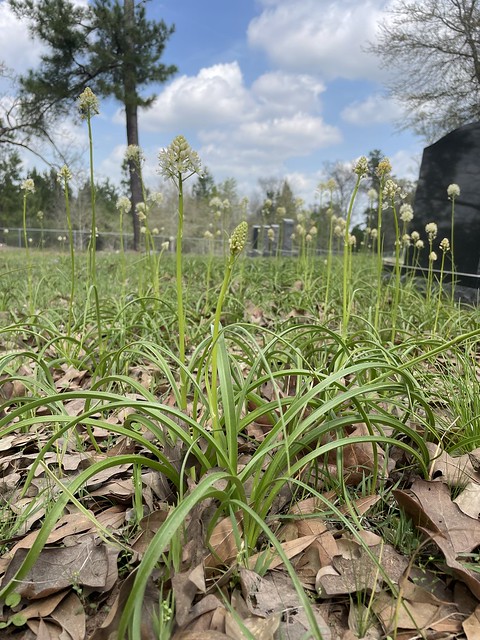

Nuttall’s Deathcamas, Toxicoscordion nuttallii
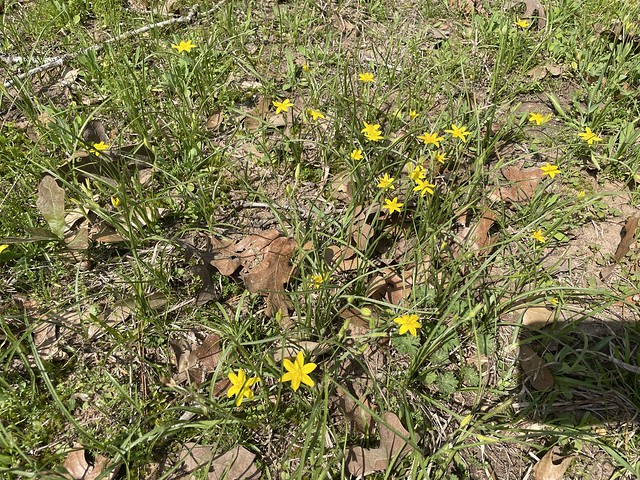
Yellow star grass, Hypoxis hirsuta

Tenpetal anemone, Anemone berlandieri

Ozark milkvetch, Astragalus distortus

Fraser’s wild onion, Allium fraseri
Right before I went to this cemetery I had seen people in central Texas posting photos of Nuttall’s death camas and had checked iNaturalist to see what its range was. There were some stragglers into the Brazos Valley and knowing where this cemetery was located and how it was on the transition zone between ecological regions, I had a hope that I could possibly find it at this cemetery or a couple of others on the far edge of my range for botanizing during the lunch hour. I had used Find a Grave to look at photos that people had posted and unfortunately Google Streetview was not available because no one had driven down this particular road, so I had to use Google Earth with the Find a Grave photos to guess what the habitat was going to be like. It certainly held promise! The area was near where a wildfire swept through in 2011, one we had had to evacuate from at the time (our rental house was fine). Either way, I figured that I would find something interesting at this particular cemetery.
And I certainly did.
I pulled up and spotted the death camas right away. I was giddy but tried to not get too worked up about it because I could be wrong—I was still 50′ away and maybe I was going to be mistaken. But when I rolled up to where they were growing, I was right in my suspicions! Later I uploaded it to iNat and checked BONAP for what they had for county records and it did not show up in Montgomery county! So I went to SERNEC to see what they had for it and there was nothing for this county! I was and am pretty sure this is a county record plant! I went back a few days later to dig up a plant to press so I could get it vouchered in an herbarium and then we went off to the Davis Mountains for Spring Break. I’d only taken photos with my phone so when I got back I wanted to take better photos with my camera. Well, they had come through and mowed! I was very disappointed! How could you mow these beauties? So, I’ve been on a quest this whole year, waiting for them to bloom again so I can take better photos. As of early February the plants are up but I haven’t been back recently to see if any of them are sending bloom stalks up. I suspect with this warmer weather this week they will be blooming soon. The goal is to catch them before the mowers this year.
The rest of the cemetery also held some interesting species, such as the Ozark milkvetch and the Fraser’s wild onion. I went back later in the spring to see what was blooming and found the prairie nymphs. I never made it there in the fall and will have to try to go this coming fall to see if anything interesting blooms during that season there.
This little cemetery will certainly be a remnant for these species because Magnolia is swallowing land to the west rapidly. When we moved here in 2011 this area was still pretty quiet and very much rural. The opening of a toll road around the city, connecting with SH 105 to the north, a means for making it easier to get to College Station, has really opened up so many tracts of land to development.
I’m hoping in another week or two I’ll be sharing much better photos of Nuttall’s death camas here for y’all!


